Newly-announced Federal RAISE (“Rebuilding American Infrastructure with Sustainability and Equity”) grants will help fund several interesting walking and biking projects around the region, including planning work for an ambitious trail from the Bainbridge Island Ferry Terminal to La Push on the Pacific Coast.
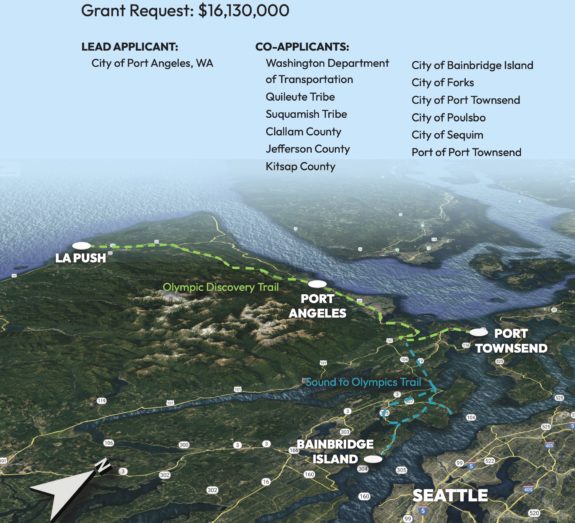
The City of Port Angeles led a successful grant application for the full trail planning project, receiving their full $16,130,000 request. This means they should have the resources now to bring the entire 200-mile trail project to 100% design, making it ready for construction. The trail will span many different municipalities, tribal lands and counties in addition to Olympic National Park, but it already has major head starts working in its favor. It combines the Olympic Discovery Trail, an iconic but unfinished rails-to-trails project, with the relatively nascent Sound to Olympics Trail while also adding spurs and a loop to reach Poulsbo, Kingston and Port Townsend.
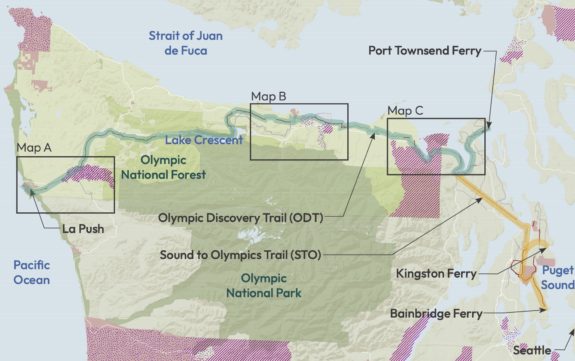
But beyond the local benefits of this trail, it will also serve as the Pacific Ocean terminus for the transcontinental Great American Rail-Trail.
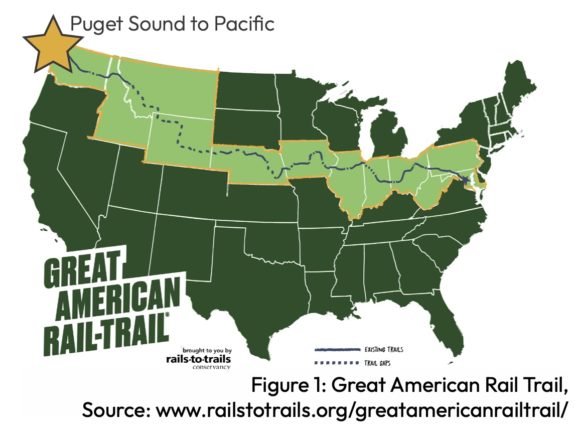
Shoreline bike/walk bridge over I-5 + west-side multimodal connections
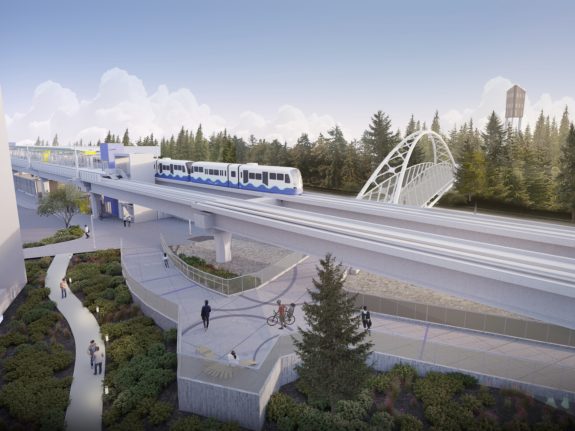
The City of Shoreline will receive $20 million to improve “multimodal connections to the Shoreline South Regional Transit Hub,” which includes the under-construction Shoreline South/148th Link Light Rail Station. The centerpiece of this work is a new walking and biking bridge over I-5 at N 148th Street, which the city hopes to open by the end of 2026. Work in the grant also bike connections between the Interurban North Trail and the new light rail station and bridge via what the city is calling “off-corridor” routes like 148th, Corliss, 150th, Ashworth, 157th and Midvale. The “off-corridor bike network” was initially born out of Seattle and Shoreline failing to properly improve safety on N 145th Street, which serves as a border between the cities.
More details from Senator Patty Murray’s Press release:
“Shoreline is constantly growing—and supporting this effort has been a longtime priority of mine, so I am really excited for Sound Transit to open its newest Link light rail station,” Senator Murray said of the grant for Shoreline. “We have to make sure that pedestrians, cyclists, and people using wheelchairs can safely access the new station, and this grant will go a long way towards making that happen.”
Sound Transit is constructing a new Shoreline South/148th Link Station and will begin providing regional light rail service in 2024. The 145th Street Corridor has a history of high collisions, and is impassable to users in wheelchairs, pedestrians, and cyclists. This project will fund a series of multimodal improvements including a bicycle and pedestrian bridge—bringing 70 acres of neighborhood together—across Interstate 5, ADA-accessible sidewalks and curb ramps on 145th Street, and a series of bicycle boulevards. The project will improve overall traffic flow and safety along 145th, a bustling freight corridor, and improve access to the future light rail station—all of which will allow people, vehicles, and freight to move more efficiently throughout the region.
Seattle ‘low-emission neighborhoods’
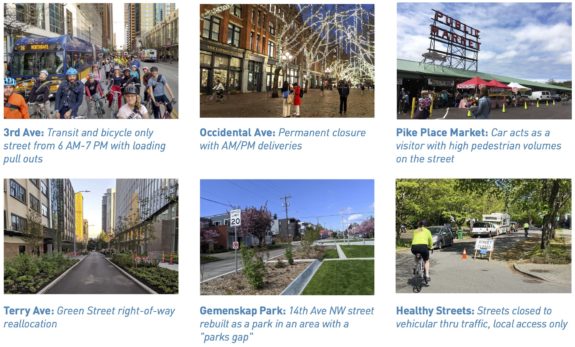
The newly announced grants also include $1.2 million for planning “low-emission neighborhoods” in Seattle. The top bullet point in the city’s list of strategies is “making walking, biking, and transit the preferred option for more trips.” Sounds great! The $1.2 million is the full amount requested, and the city committed to adding $300,000 in local funds as part of the grant application (PDF). Seemingly by design, it is difficult to say exactly will come from this planning process. The grant anticipates starting planning work in 2024 with at least 3 neighborhoods identified by the end of 2024. After ample process, a project concepts list should be complete by March 2025. More details from Mayor Bruce Harrell’s Office:
This grant will support Mayor Harrell’s efforts to lead the Seattle Department of Transportation (SDOT), Office of Sustainability and Environment (OSE), Office of Planning and Community Development (OPCD), Office of Economic Development (OED), and Seattle City Light (SCL) to employ a community-oriented and holistic approach to drive climate action by:
- Making walking, biking, and transit the preferred option for more trips
- Accelerating transportation electrification
- Advancing community climate readiness and resiliency
- Achieving a measurable decrease in transportation-related air pollution and health disparities
The City has set a timeline to complete planning work for this low-pollution neighborhood project in 2025, with implementation positioned to be complete by 2028. Community conversations around low-pollution neighborhoods will occur over the summer and fall of 2023, to align with the goals of the Seattle Transportation Plan and inform future transportation funding decisions.







